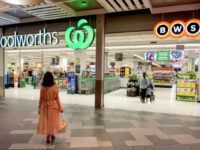 Australia’s big supermarkets are being outdone by catered food, as changing consumer habits increasingly drive shoppers into restaurants and cafes and out of Coles and Woolies, according to new data.
Australia’s big supermarkets are being outdone by catered food, as changing consumer habits increasingly drive shoppers into restaurants and cafes and out of Coles and Woolies, according to new data.
Deloitte partner David Rumbens’ quarterly retail forecast has found that catered food spend is outpacing supermarket spend at a rate of nearly three-to-one, with a 3.3 per cent rise in those eating out over the year to June 2017 in real terms outclassing 1.2 per cent growth in supermarkets.
Rumbens puts the development down to increasing retail spend over the last 12 months, telling Inside FMCG that cafés or restaurants are growing above population as select income segments benefit from an increase in discretionary income.
“Homeowners clearly have more disposable income and are eating out more … supermarkets are a little weaker than we’ve seen in a while,” he said.
Deloitte does however expect the discrepancy to normalise somewhat over the next year, forecasting that increasing retail spend will drive an uptick in total volume as momentum in the labour market drives an increase in full time employment.
Rumbens reckons “the worst may be over” for the retail sector more broadly, with “solid” growth predicted over the next year, with figures out to June 2020 pegging above 0.6 per cent gains quarter-on-quarter.
The growth is expected to be driven by employment, in turn driving spending, with full time job growth rising 1.9 per cent already between December 2016 and July 2017.
That’s good news for suppliers, but the elephant in the room, which stands to partially or perhaps fully offset any macro-economic momentum, are rising electricity prices.
Rumbens numbers peg price increases at 116.4 per cent over the ten years to June 2017, with a 7.8 per cent increase in the last twelve months alone. He said there’s no obvious solution to the current issues plaguing the national electricity market, despite comprehensive discussion in Canberra about a fix.
“Concern is that there’s not enough investment going into lower cost production,” Rumbens said. “It’s quite likely that we’ll see price growth at elevated levels … if you look at the next year or two there’s concern about whether we’ll have enough capacity over summer on those really hot days.”















